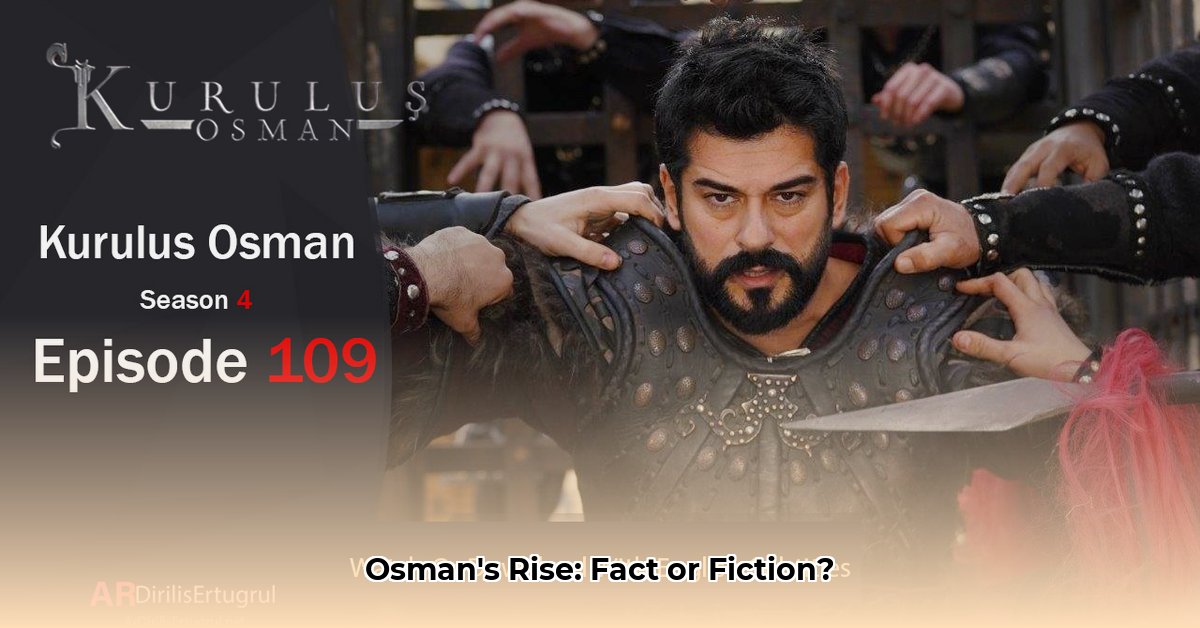
A Tale of Two Founders: Comparing Diriliş: Ertuğrul and Kuruluş Osman
Turkey's globally successful historical dramas, Diriliş: Ertuğrul and Kuruluş Osman, offer compelling narratives of the early Ottoman Empire. While both series chronicle the foundational period of the empire, they present distinct perspectives on leadership, conflict, and the broader historical context. This comparative analysis examines the key similarities and differences between these productions, highlighting their contributions to popular understanding of this pivotal era while acknowledging their inherent limitations in historical accuracy.
Diriliş: Ertuğrul centers on Ertuğrul Ghazi, the father of Osman I, focusing on his efforts to consolidate the Kayı tribe and establish its dominance amongst rival factions. The series emphasizes the challenges of tribal leadership, strategic alliances, and the intricate political landscape of Anatolia. It depicts smaller-scale conflicts, highlighting Ertuğrul’s tactical acumen and diplomatic skills in navigating a treacherous environment. The series paints a portrait of gradual, painstaking consolidation, emphasizing the slow build towards a larger empire. This “bottom-up” approach, focusing on tribal unity and careful maneuvering, forms a key thematic element.
In contrast, Kuruluş Osman directly addresses the rise of Osman I, his son, concentrating on the expansion of Ottoman territory and the consolidation of power. The series presents larger-scale battles, illustrating Osman's ambition and ruthlessness in expanding the fledgling Ottoman state. Where Diriliş: Ertuğrul depicts carefully cultivated alliances, Kuruluş Osman showcases the use of force and the strategic expansion of territorial control. This shift in focus allows for grandiose depictions of military victories and the growing complexity of managing an expanding dominion. The narrative here shifts to a “top-down” approach, focused on conquest and centralized power.
Leadership Styles: The Builder and the Conqueror
Both series offer compelling portrayals of leadership, though their approaches differ significantly. Ertuğrul in Diriliş: Ertuğrul is depicted as a patient strategist, prioritizing alliances and diplomatic solutions whenever possible. His leadership is characterized by calculated risks and a focus on building a strong foundation for future generations. He’s the careful architect of the future empire, consolidating power through long-term strategies.
Conversely, Osman I in Kuruluş Osman is portrayed as a more decisive and ambitious leader, frequently relying on military prowess and assertive expansionism. His leadership emphasizes bold action and a relentless pursuit of territorial growth. He is the active conqueror, forging the empire through decisive victories and forceful consolidation of power. While both leaders face internal dissent and external threats, their methods of overcoming these challenges reflect contrasting leadership philosophies.
Historical Accuracy: A Necessary Caveat
It is crucial to acknowledge that both Diriliş: Ertuğrul and Kuruluş Osman, while inspired by historical events, remain works of fiction. While drawing on elements of reality, the series incorporate creative liberties and dramatic embellishments. The exact historical accuracy of specific events and the portrayal of certain figures remain subjects of debate among historians. The simplification and dramatization of complex historical events should be carefully considered. The series serve as engaging entry points for exploring the era, but should not be considered definitive historical accounts. Further research using reputable academic sources is encouraged for a more complete understanding.
The Role of Women: A Comparative Perspective
Both series feature a variety of female characters who exhibit varying degrees of agency and influence. Diriliş: Ertuğrul showcases women primarily within the family structure and as supporters of the male protagonists. Kuruluş Osman often portrays women participating more actively in political and interpersonal dynamics, albeit within the limitations of the socio-cultural context of the time. Analyzing the roles of women in these dramas provides an opportunity to discuss how historical narratives have evolved, and how female contributions may have been represented (or perhaps misrepresented) throughout different periods of history. However, further scholarly research is needed to fully analyze the intricacies of these portrayals and their historical relevance.
A Global Impact: Cultural and Economic Implications
The global popularity of both series has had several significant implications. They have sparked a renewed interest in Ottoman history and Turkish culture among international audiences. This surge in interest has tangible effects, including increased tourism to locations featured in the series and the economic benefits associated with international media success. Furthermore, the shows' success provides a potential model for other countries to showcase their history through engaging historical dramas, thereby enriching global cultural understanding and fostering appreciation for diverse historical narratives.
Conclusion: Beyond the Spectacle
Diriliş: Ertuğrul and Kuruluş Osman represent a significant cultural phenomenon, captivating audiences worldwide with their engaging narratives and showcasing a pivotal period in history. While the series offer compelling stories, it’s essential to maintain a critical perspective, separating dramatic license from historical accuracy. By engaging with these productions critically and researching further using verified historical sources, audiences can harness the shows’ potential to enhance their understanding of the early Ottoman Empire's complexities and legacies. The ongoing discussion surrounding these series highlights the powerful intersection of history, entertainment, and the continuing global interest in Ottoman history.